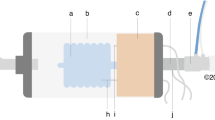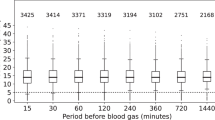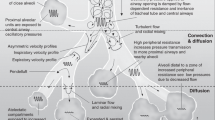Abstract
Objective:
The objective of this study is to compare the effects of back-up ventilation rates (BURs) on triggered inflations and patient cardiorespiratory stability during assist-control/volume guarantee ventilation (AC/VG).
Study Design:
This study is a randomized crossover trial conducted in a neonatal unit in an Australian tertiary NICU. In all, 26 stable preterm infants on AC/VG ventilation were studied at BUR settings of 30, 40 and 50 min−1. Inflation rate, triggering and cardiorespiratory measures of patient stability were compared during 20 min epochs with 10 min washout periods.
Result:
The 26 infants studied were median (inter-quartile range) gestational age 27 (26, 30) weeks, birth weight 0.84 (0.75, 1.14) kg and FiO2 0.24 (0.21, 0.31) and age 6 (4, 19) days. At BURs of 30, 40 and 50, the proportions of inflations, which were triggered, were mean (s.d.) 85% (11), 75% (19) and 61% (25); P<0.01 for all comparisons. Total delivered inflation rates were 56 (8), 58 (9) and 62 (8) min−1, respectively. Cardiorespiratory parameters did not vary between the settings.
Conclusion:
Using a lower BUR allows greater triggering of ventilator inflations. Cardiorespiratory parameters including CO2 levels were stable at all rates.
This is a preview of subscription content, access via your institution
Access options
Subscribe to this journal
Receive 12 print issues and online access
$259.00 per year
only $21.58 per issue
Buy this article
- Purchase on Springer Link
- Instant access to full article PDF
Prices may be subject to local taxes which are calculated during checkout



Similar content being viewed by others
References
Klingenberg C, Wheeler KI, Owen LS, Kaaresen PI, Davis PG . An international survey of volume-targeted neonatal ventilation. Arch Dis Child Fetal Neonatal Ed 2011; 96 (2): F146–F148.
van Kaam AH, Rimensberger PC, Borensztajn D, De Jaegere AP . Ventilation practices in the neonatal intensive care unit: a cross-sectional study. J Pediatr 2010; 157 (5): 767–771.
Greenough A, Dimitriou G, Prendergast M, Milner AD . Synchronized mechanical ventilation for respiratory support in newborn infants. Cochrane Database Syst Rev 2008; (1): CD000456.
Abubakar K, Keszler M . Effect of volume guarantee combined with assist/control vs synchronized intermittent mandatory ventilation. J Perinatol 2005; 25 (10): 638–642.
Patel DS, Sharma A, Prendergast M, Rafferty GF, Greenough A . Work of breathing and different levels of volume-targeted ventilation. Pediatrics 2009; 123 (4): e679–e684.
Mrozek JD, del-Stenzel EM, Meyers PA, Bing DR, Connett JE, Mammel MC . Randomized controlled trial of volume-targeted synchronized ventilation and conventional intermittent mandatory ventilation following initial exogenous surfactant therapy. Pediatr Pulmonol 2000; 29 (1): 11–18.
Scopesi F, Calevo MG, Rolfe P, Arioni C, Traggiai C, Risso FM et al. Volume targeted ventilation (volume guarantee) in the weaning phase of premature newborn infants. Pediatr Pulmonol 2007; 42 (10): 864–870.
McCallion N, Lau R, Morley CJ, Dargaville PA . Neonatal volume guarantee ventilation: effects of spontaneous breathing, triggered and untriggered inflations. Arch Dis Child Fetal Neonatal Ed 2008; 93 (1): F36–F39.
Amitay M, Etches PC, Finer NN, Maidens JM . Synchronous mechanical ventilation of the neonate with respiratory disease. Crit Care Med 1993; 21 (1): 118–124.
Claure N . New Modalities of Mechanical Ventilation in the Newborn. In: Bancalari E (ed). The Newborn Lung: Neonatology Questions and Controversies. Saunders Elsevier: Philadelphia, 2008: pp392–418.
Sassoon CS, Zhu E, Caiozzo VJ . Assist-control mechanical ventilation attenuates ventilator-induced diaphragmatic dysfunction. Am J Respir Crit Care Med 2004; 170 (6): 626–632.
Vassilakopoulos T . Ventilator-induced diaphragm dysfunction: the clinical relevance of animal models. Intensive Care Med 2008; 34 (1): 7–16.
Baumer JH . International randomised controlled trial of patient triggered ventilation in neonatal respiratory distress syndrome. Arch Dis Child Fetal Neonatal Ed 2000; 82 (1): F5–F10.
de Boer RC, Jones A, Ward PS, Baumer JH . Long term trigger ventilation in neonatal respiratory distress syndrome. Arch Dis Child 1993; 68 (3 Spec No): 308–311.
Baumer JH, Ellis S . Patient triggered ventilation in infants under 28 weeks. Early Human Dev 1994; 39 (2): 144.
Sinha SK, Donn SM . Weaning newborns from mechanical ventilation. Semin Neonatol 2002; 7 (5): 421–428.
Acknowledgements
We acknowledge the participation of the patients and their families and the support of the nursing staff at the Royal Women's Hospital. Connie Wong provided assistance with recruitment and data collection. Professor Stuart Hooper provided assistance with preparation of the manuscript. We are grateful to Professor Martin Keszler for his suggestions regarding using lower back-up rates, Dr Paul Dixon for providing advice regarding data acquisition and processing, and A/Professor Susan Donath for methodological and statistical advice. KIW is supported by the Monash University International Graduate Scholarship. This project was funded by Australian National Health and Medical Research Council grant #384100. Peter Davis and Stuart Hooper are in receipt of Australian National Health and Medical Research Council research fellowships.
Author information
Authors and Affiliations
Corresponding author
Ethics declarations
Competing interests
CJM has provided advice to Dräger Medical. This company was not involved with the study design, conduct, data analysis or preparation of the manuscript and did not contribute financial support.
Rights and permissions
About this article
Cite this article
Wheeler, K., Morley, C., Hooper, S. et al. Lower back-up rates improve ventilator triggering during assist-control ventilation: a randomized crossover trial. J Perinatol 32, 111–116 (2012). https://doi.org/10.1038/jp.2011.73
Received:
Revised:
Accepted:
Published:
Issue Date:
DOI: https://doi.org/10.1038/jp.2011.73
Keywords
This article is cited by
-
The BUR is important!
Journal of Perinatology (2012)
-
A practical guide to neonatal volume guarantee ventilation
Journal of Perinatology (2011)



